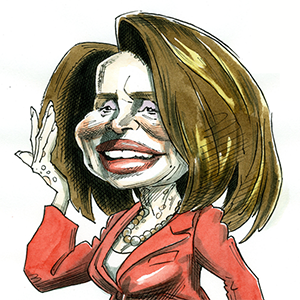Could political violence have a chilling effect on office seekers in Minnesota?
Published in News & Features
MINNEAPOLIS — After the shootings of state legislators and their family members, Minnesota DFL Chair Richard Carlbom feared that enthusiasm he was seeing among people interested in running for office would fade.
But that wasn’t what he found when he attended a DFL fish fry in northern Minnesota the Monday after the attacks.
“The room was somber, but resolute,” he said, noting one person told the crowd they planned to honor Democratic House Leader Melissa Hortman by running for the Legislature.
“I hope that, in this moment, people will think carefully about what service means to them, what it means to their fellow Minnesotans, and ultimately choose to serve in the example that Melissa Hortman served for us all.”
Across the country, increased threats and harassment in recent years have had a chilling effect on local elected officials’ willingness to engage in political activities, from running for re-election to working on controversial issues to attending public events, according to surveys by Princeton University’s Bridging Divides Initiative and nonprofit CivicPulse.
The assassination of Rep. Hortman and the shooting of Sen. John Hoffman this month was categorically different than threats and harassment. And while the attacks have made some people more determined to serve, it has also prompted officeholders, party officials and community members to wonder: In a state that has long prided itself on civic participation, who exactly will be willing to run for office?
Elected officials say harassment has become an unfortunate but predictable part of public service — so common it often goes unreported.
There are signs the problem is getting worse.
Officeholders and potential candidates increasingly mention political violence and threats when talking to staff at the Center for American Women and Politics, said Kelly Dittmar, the center’s director of research. While those issues are not new in the U.S., she said the internet makes divisiveness and danger more “in-your-face.”
Elected officials also seem to be more willing to talk about threats and harassment, particularly gender or race-focused threats, which is an important step to address the problem, Dittmar said. She pointed to congresswoman Pramila Jayapal — who had been threated by an armed man outside her Seattle home — sharing threatening voicemails in 2022 and U.S. Rep. Ayanna Pressley’s staff talking about putting mugshots from Capitol police on their office wall so they knew the faces.
But Dittmar worries those considering a bid for office may say, “It’s not worthwhile.”
Already, politicians are operating in an environment where national and state polarization has made serving in local offices throughout Minnesota —which are nonpartisan and often come with low pay — more fraught.
“We used to say all politics are local, but increasingly, we’re starting to say that all politics are national,” said Luke Fischer, the executive director of the League of Minnesota Cities.
At the same time, local officials can sometimes find themselves the subject of withering national scrutiny, said Shannon Hiller, executive director of the Bridging Divides Initiative at Princeton University, which studies political violence. In the last presidential election cycle, false claims about Haitian immigrants in Springfield, Ohio, became a flashpoint, including in a presidential debate.
In that environment, a “consistently high” baseline of threats has consequences for representative government, Hiller said. In fact, local officials — Democrats and Republicans report that threats affect their behavior in similar ways — are changing the way they interact with constituents because of the current political environment.
Before the shootings of Hortman and Hoffman, there was little evidence that increased toxicity had dampened people’s desire to seek office in Minnesota, said Cassondra Knudson, with the Minnesota Secretary of State’s Office.
“We haven’t noticed any fewer candidates,” she said, noting uncontested races are very uncommon and there are usually candidates from multiple parties running for seats in the November general election.
And though it remains to be seen how the attacks will affect Minnesotans’ willingness to run, there is little doubt it shifted the landscape for political hopefuls.
While difficult to quantify, “it’s hard not to to expect that this is going to have a deterring effect on people deciding to serve, and we do, of course, need people to serve in these roles,” said Patricia Nauman, executive director of the Association of Metropolitan Municipalities, a group that represents cities in the seven-county metro. “It’s the underpinnings of our government and our democracy.”
House Speaker Lisa Demuth, R-Cold Spring, echoed that sentiment: “I would say that this situation is going to cross everyone’s mind.”
In addition to potentially affecting the number of people willing to run and serve, the violence could also affect the type of candidates, some officials said.
Candidate recruitment, even at the most local level, is already a challenge for Greg Davis, chair of the Le Sueur/Scott County DFL who also serves on the board for Washington Township, a deep-red area where DFLers often get just over 30% of the vote.
In the current environment, people who are willing to run sometimes fall on the “political fringes,” both on the left and right, rather than representing the majority, Davis said, something he worries will only get more common going forward.
Sen. Jim Abeler, R-Anoka, shares that concern, saying the shootings could broaden partisan divides.
“Now when it comes to people that are going to run, some people that are just regular citizens are now going to be disinclined to even think about it,” he said. “That’s going to bring in more of the people on the extreme side, and we desperately need more people with regular life experience.”
------------
—Allison Kite and Nathaniel Minor of the Minnesota Star Tribune contributed to this story.
-------------
©2025 The Minnesota Star Tribune. Visit at startribune.com. Distributed by Tribune Content Agency, LLC.







Comments